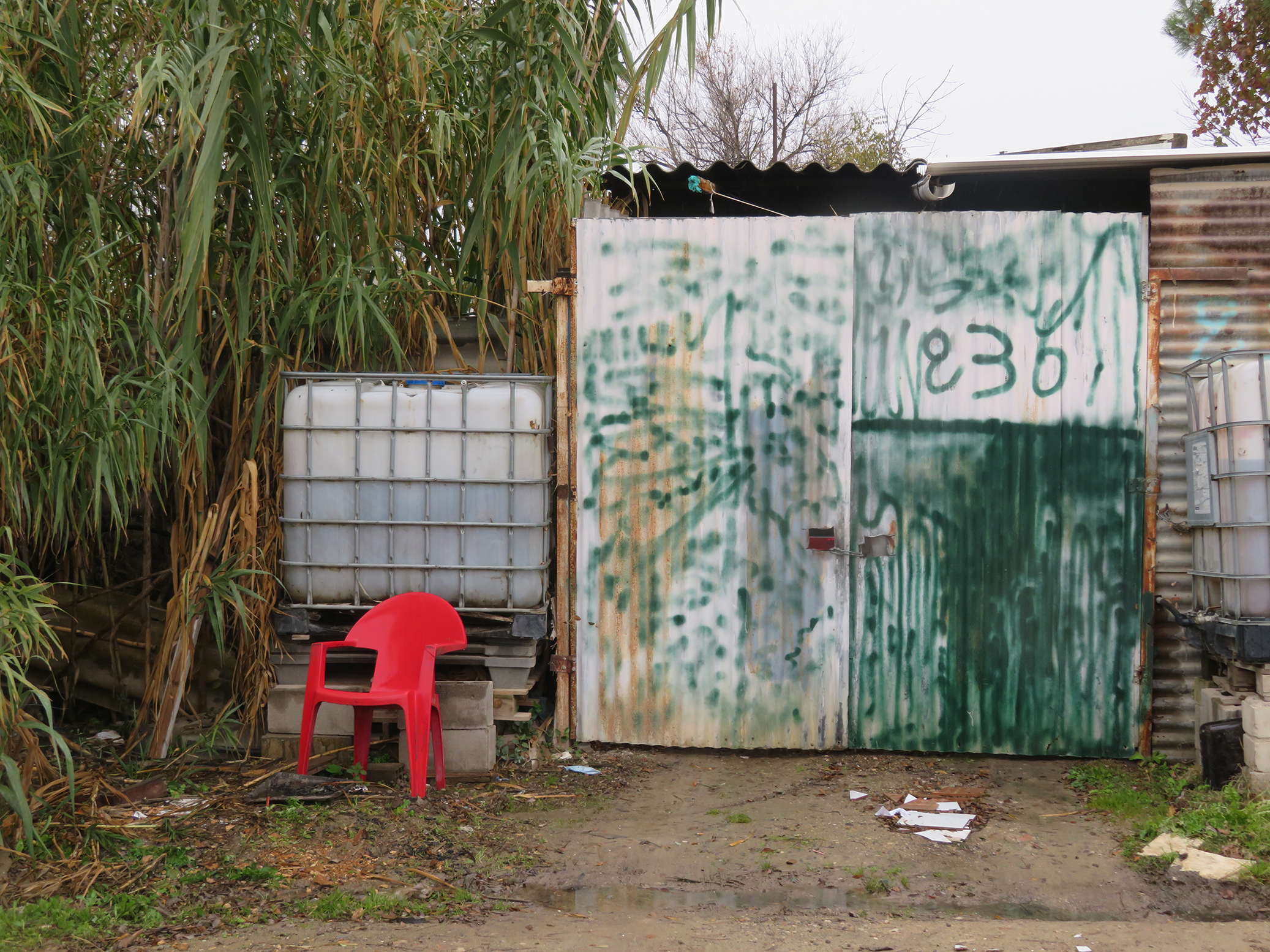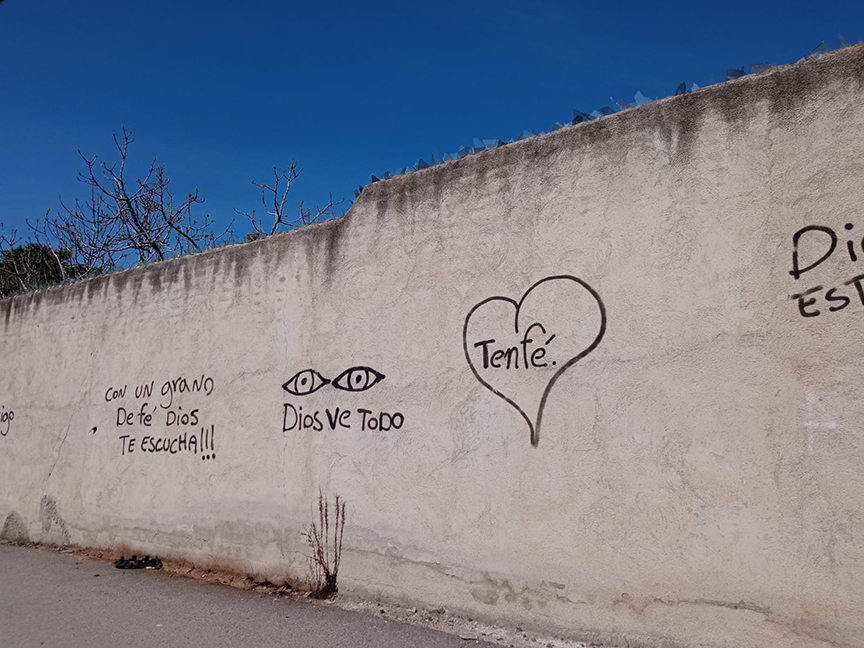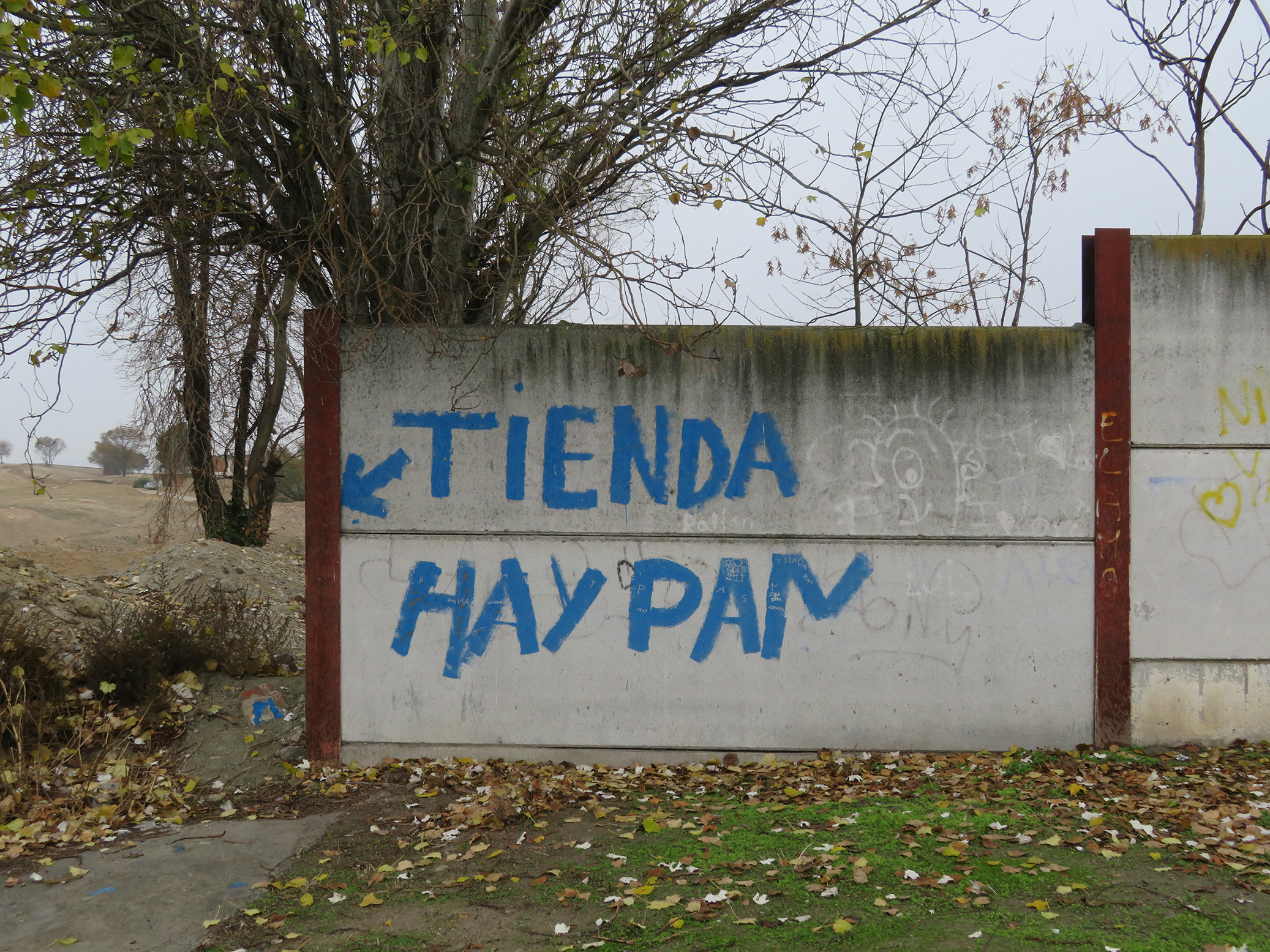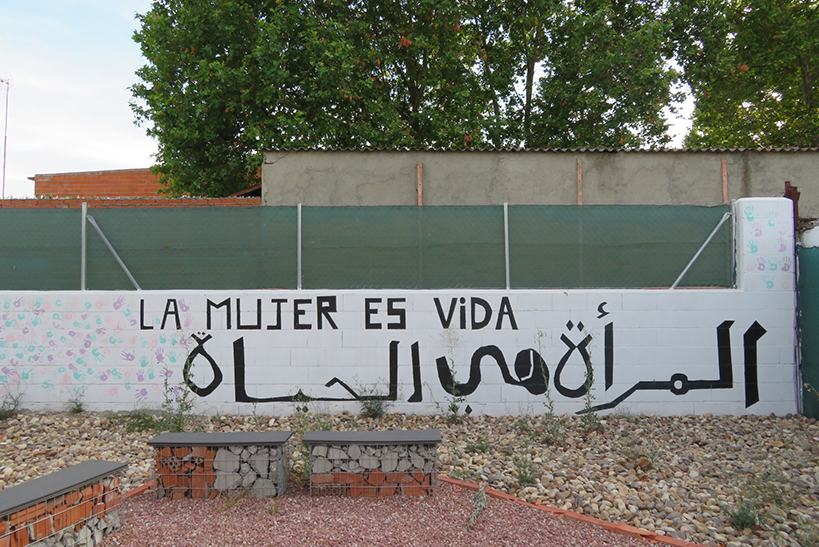Cañada Real, Madrid
40.33791° N, 3.58994° W

The graffiti photographed in this visual chronicle appears on different walls throughout Cañada Real Galiana. The walls contain indications, pleadings, and aspirations, giving an account of the different frictions that exist in what is the largest and oldest informal settlement in the Autonomous Community of Madrid, which, according to EU data, is also the largest in Europe.
The linear settlement occupies 14 kilometers of an old 75-meter-wide cattle track of royal property road used for the transhumance of cattle property since the thirteenth century. Although this route is currently legally decommissioned, it is still public property and recognized as a cattle trail. With the disinterested public administration, the territory was gradually “colonized” through the construction of houses, becoming a neighborhood to some 2,700 families.
The first inhabitants arrived just after the Spanish Civil War (1936–1939), at a time of big internal migrations. While the inhabitants of small villages too closely associated with the victor of the war were forced to flee to a larger city that would facilitate their anonymity, others relocated in search of work opportunities. During the 1950s, Cañada welcomed around three hundred families, all settled in the northern part of the cattle route. They were working-class people with few resources but still nostalgic for what a rural area could offer: a small vegetable garden and some farm animals. They found it in Cañada.
And so the territory was slowly occupied by self-organized communities, all with a certain blind eye from the authorities who allowed them to settle down and build their precarious homes as the result of the state’s own inability to offer affordable public housing.
The greatest growth occurred in the 1990s and the beginning of the 2000s, when the global economic crisis hit the country and, specifically, Madrid. Many people who lost their jobs and homes, as well as migrants and asylum seekers, had no other option but to move towards the urban margins and become part of an impoverished and degraded periphery.
This entire population has been historically neglected by the public administration, except in 2015–2019 during the mandate of Mayor Manuela Carmena, who developed a roadmap for achieving social inclusion through the fulfillment of the right to housing and the city, as well as enhancing the participation of all actors involved in the territory. Other than this brief moment of optimism, no realistic and consensual solutions have been offered. Segregation and exclusion have prevailed over the fulfillment of fundamental human rights.
At present, the situation is so socially vulnerable and environmentally abject that it is inconceivable that Cañada is part of the richest region in Spain.
The numbers are clear. According to UN-HABITAT, eighty percent of Cañada’s almost nine thousand inhabitants live cut-off from society in dangerous homes (whether in the form of inadequate housing—self-built, substandard housing, or shacks) and in an environment severely degraded by illegal dumping, a lack of sewage systems, and quality public services.
Within this population is an even more vulnerable sector: the southern end of Cañada has been without electricity for more than two years (as of December 2022). The service had been provided by the regional government of Madrid but was denied for safety reasons. The families Cañada Real suspect that these supply cuts have more to do with the pressure exerted by neighboring developments that wish to evict the residents. Despite the complaints filed and resolved before the various national and international bodies, there has been no change. They are still in the dark and without electricity.
The walls presented in this collection of photographs represent a contained rage. They describe the misery, the explicit violence, the lack of resources, the social exclusion, the cultural diversity, the impossibility of registering the occupation of plots of land, even the serious linguistic deficiencies, and the fragile educational processes, but they also want to give space for hope.
The families of Cañada, together with different social organizations, political groups, and universities, have been weaving together possible and realistic strategies to improve and facilitate day-to-day life, demanding the fulfillment of fundamental human rights from political leaders, the ombudsman, and European organizations and committees.
And yet despite these efforts and international support, the situation remains unsustainable. With this small sample of “speaking walls,” we hope to awaken a public conscience, change the way we look at things, and move towards a key question: what does this have to do with me?




This text has been excerpted from forA issue #1: Frictions. To read the full essay, purchase the journal here: https://birkhauser.com/books/9783035628517
Paz Núñez-Martí is an architect and specialist in heritage recovery and rehabilitation and development cooperation. She coordinates the area of Habitat and Territory of the Research Group applied to development cooperation COOPUAH. She has been Technical Advisor to the Madrid City Council for the shanty town settlement of Cañada Real (2015–2019) and currently conducts applied research on spatial justice, urbanism, and citizenship from various civic platforms with political impact in the city of Madrid.
Santiago Cirugeda is a social architect who questions the limits of legality and defining processes for social action to improve the city and tackle some of the problems facing residents. He is the founder of Recetas Urbanas, a design and advocacy collective of architects, lawyers, and social workers. Known for its self-build projects that rely on local participation for construction, the collective uses locally sourced second or third-hand materials to complete its mobile structures. Activating different areas of urban reality, its projects are at the same time highly functional and exploit the legalities surrounding the occupation of public space.